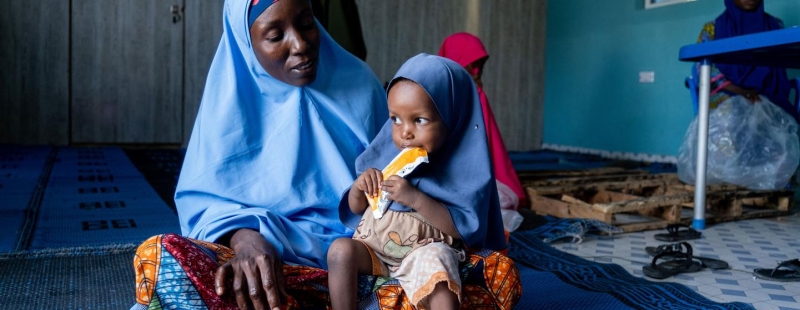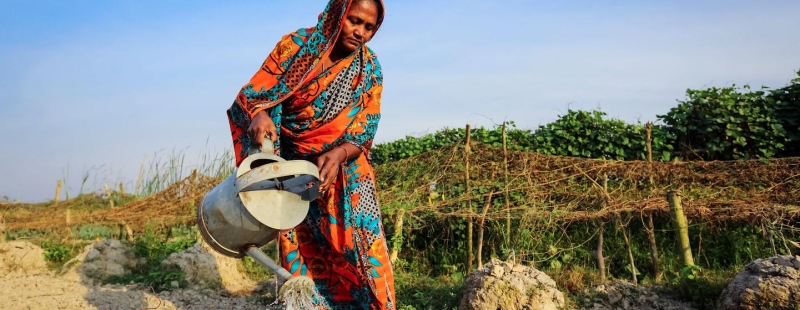
FAO is providing assistance in DR Congo by providing cash transfers and agricultural inputs. WE EXPLAIN | Why more than 670 million people in the world are hungry? Humanitarian aid
According to the UN, more than eight percent of the global population—about 673 million people—suffer from hunger. At the same time, there is enough food in the world to feed more than 8 billion people on the planet.
Conflict, climate change, inequality and other factors play a role in this imbalance.
Ahead of World Food Day, celebrated on October 16, we share five key facts about why people continue to starve.
1. Conflicts and political instability
Armed conflicts in hotspots such as Ukraine, Sudan and Gaza are disrupting food production, supply chains and market access. It also results in the displacement of people, exacerbating acute food shortages.
Haiti has an estimated 5.7 million people – about half the population, many of whom have fled their homes due to violence – facing food shortages and 1.9 million already in emergency situations.

WFP distributes food to residents of the gang-affected area of Cité Soleil in the Haitian capital Port-au-Prince.
In conflict zones, the UN, primarily through the World Food Program (WFP), provides emergency food assistance to the population. Affected communities are also provided with seeds, livestock and farming tools so that they can produce their own food without being dependent on aid.
2. Climate change and extreme weather
Increasing climate variability, including droughts, floods and heat waves, is severely disrupting farmers’ livelihoods and undermining agricultural productivity. As a result, food is becoming less accessible, especially in the most vulnerable regions.
Somalia, Sudan, South Sudan, Mali, Burkina Faso, Democratic Republic of Congo (DRC), Nigeria and Ethiopia are facing severe food shortages caused by a combination of conflict, drought, floods and desertification. For example, Somalia is experiencing its worst drought in four decades, in addition to years of conflict and mass displacement of the population.

A boy rolls a container of water into Dollow, near the Somalia-Ethiopia border.
The UN is promoting climate-resilient agricultural practices to mitigate the impact of environmental shocks and adapt to new weather conditions.
3. Economic Turmoil and Inflation
Global and regional economic downturns, rising food and energy prices, and inflation have reduced purchasing power and the availability of nutritious foods, especially in low-income countries. income.
The COVID-19 pandemic, the war in Ukraine and climate shocks all contributed to rising food prices between 2020 and 2024.
At the same time, as a result of lower real wages and rising inflation, people, especially in countries with low incomes are increasingly unable to afford nutritious food and are reducing the number of meals they eat per day.
In times of economic turmoil and inflation, the UN is expanding food distribution rations and nutritional supplements, and provides cash transfers to help families buy food locally, supporting both nutrition and the local economy.
4. Structural poverty and inequality
Deeply entrenched poverty and social inequality limit people’s access to food and resources, especially in rural and particularly vulnerable communities.
Low incomes, poor infrastructure and limited local services often mean that vulnerable populations – such as women and indigenous peoples – do not have access to adequate supplies food.
According to the UN, almost 700 million people worldwide live in extreme poverty, with two-thirds of them in sub-Saharan Africa.

A two-year-old girl receives nutritional supplements at a health center in northern Nigeria.
UN agencies are seeking to strengthen social protection systems and move away from crisis-focused humanitarian assistance to a model in which low-income countries build their own inclusive and resilient systems. This approach enables communities to reduce hunger, develop local capacity, and improve long-term food security.
5. Trade disruptions and market volatility
Export restrictions, tariffs, and volatile commodity prices can destabilize food markets, making food less available and too expensive.
For example, Bangladesh, Pakistan and Sri Lanka are struggling with food price volatility and debt crises. These challenges are compounded by trade policy uncertainty, especially global tariffs and inflation. Ultimately, this limits people’s access to affordable food.

In Bangladesh, farmers are growing more climate-resilient crops.
Brazil and Mexico faced revisions to their economic growth forecasts due to trade tensions and inflation. This weakens the financial capacity of consumers, especially among the poorest communities, who are losing access to food. crises in the areas of food, energy and finance. These efforts are aimed at stabilizing markets and protecting vulnerable populations.
